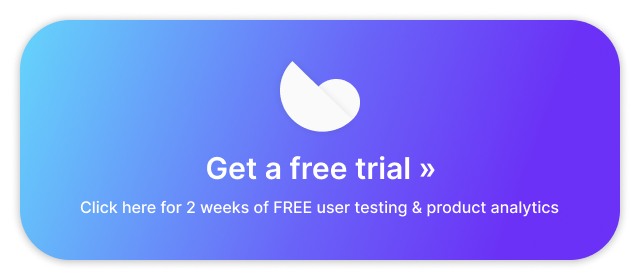What is the value of quotes? The following eight quotes about user testing and user experience design will only confirm things we’ve said many times, things that you probably already know. So why bother?
While the basic ideas behind these quotes may be familiar, my own feeling is that the value is in the perspectives. Every person has a different way of looking at things. The way they say something may capture the same message in a way that we never could – or it may bring experience and gravitas that we don’t have.
In a way, that’s similar to the value of user testing and user research, too: there’s something to gain by getting outside of our heads and seeing from other people’s perspective. I hope that these 8 quotes inspire you to see in a new light.
“I get very uncomfortable when someone makes a design decision without customer contact.”
– Dan Ritzenthaler, Sr. Product Designer at Iora Health
Taste and design instincts are important, but they’ll only get you so far. Ultimately, the important thing is whether users understand what you’ve put in front of them. If that’s the only litmus test, then how could you not listen to the user’s point of view before deciding what they’re going to use?
Read more: Is user testing a luxury?
“How well we communicate is determined not by how well we say things, but how well we are understood.”
– Andrew Grove, former CEO at Intel Corp
One of the easiest mistakes to make when you don’t listen to users is speaking a different language from them. As someone who works at your company, you may have a different vocabulary and different way of talking about your product and industry. But what words do customers use?

Think about trying to describe the color red to a blind person. You might be tempted to talk about apples and fire trucks and ketchup, but that would only make sense to you – not to someone who can’t see those things. You have to find a way to communicate it in terms that are meaningful to them.
“We tend to be distracted by the voices in our own heads telling us what the design should look like.”
– Michael Bierut, Partner at Pentagram Design
Preconceived notions can stymie the best of intentions in design. Even if you’re doing user testing, your ideas about the design can color the way you interpret the results and lead to confirmation bias rather than objective analysis. Be careful of falling into this trap, and know your own biases.
“It’s about catching customers in the act, and providing highly relevant and highly contextual information.”
– Paul Maritz, CEO at Pivotal
How do you figure out the real problems real people are having with your website? This one calls to mind another favorite quote about not going to the zoo to see how a lion hunts. Usability feedback is the most valuable, and most reliable, when it’s originating from genuine experiences, right in the moment.
Read more: Real-time user insights from your website visitors
“Do not seek praise. Seek criticism.”
– Paul Arden, Creative Director, Saatchi & Saatchi
Praise can put wind in your sails when you’re starting to slow down, but on the whole it’s less useful than criticism. Criticism is what makes our designs better and challenges us to find superior solutions.

Sometimes people refer to user testing as a way to “validate” your design, a terminology that seems to me like it mis-identifies the purpose of user testing. The goal is not to confirm that your designs are good; it is to find every single thing wrong with your designs. Try to dig out every negative reaction from your usability testing sessions.
“The goal of a designer is to listen, observe, understand, sympathize, empathize, synthesize, and glean insights that enable him or her to ‘make the invisible visible.’”
– Hillman Curtis, Chief Creative Officer at Hillman Curtis
In this long list of action words, not a single one is “design,” or is even explicitly related to visual techniques or mediums. This quote reminds me of the many responsibilities of the designer in order to truly understand the purpose of what they are doing, and who they are doing it for. If we make it about the outputs, and not about the users, this quote suggests that that may not be “designing” at all.
“Asking users to adopt new behaviors or even modify their existing behaviors is very, very hard.”
– Khoi Vinh, Principal Design at Adobe
You can choose to fights against users’ instincts and habits, or you can use them to your advantage. Almost always, trying to re-train people to conceptualize a new pattern or design is more trouble than its worth. Khoi’s advice here has echoes of the Emperor’s wise words in our Disney UX quotes post: “No matter how the wind howls, the mountain cannot bow to it.”

This last quote is a bit longer than the others (sorry, it won’t fit into a tweet), but it very eloquently visualizes what we’re really trying to do with design at the most basic, human level.
“When you design a solution, what pops into your head?
Here is my answer: that we considered and explored. That we peered ahead into the stress test of the real world, when some harried young woman minding her own business encounters our work. She’s not thinking of us, she’s thinking of what she has to do that night — an e-mail to write to her professor, a midterm to cram for, laundry to do in preparation for that party on Saturday. And we were prepared for her. We left no detail unexamined.”
– Julie Zhuo, Product Design VP at Facebook
Don’t forget about that harried young woman. Here’s to leaving no detail unexamined.
Read more: What are the benefits of user testing?





